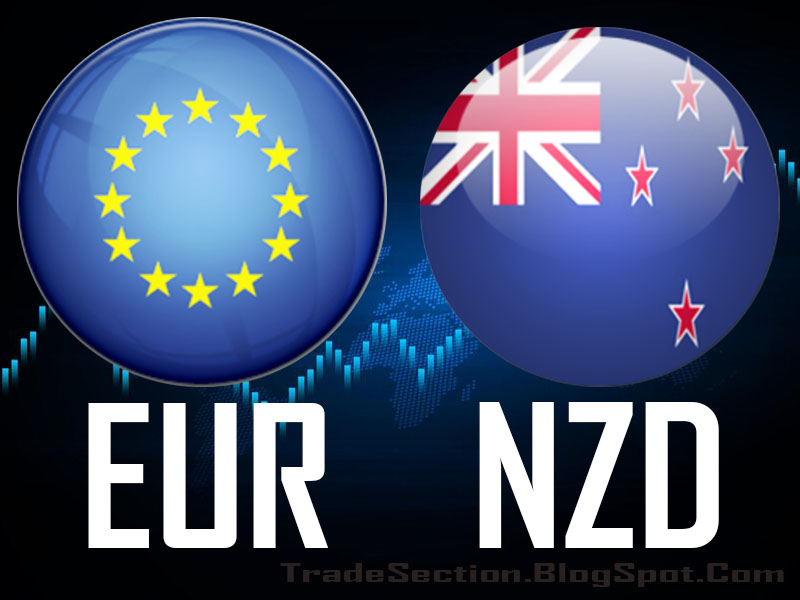⚠️ Alert: New Sell Signal Spotted on EURNZD
Fundamental Outlook for EURNZD
Recent developments in global economic indicators and central bank statements have significantly shaped the EURNZD outlook. The European Central Bank (ECB) hinted at potential rate cuts amid slowing growth in the Eurozone, while the Reserve Bank of New Zealand maintained its stance on steady monetary policy, signaling limited immediate intervention. This divergence in policy approaches has created a tug-of-war in market sentiment, with the Euro facing downward pressure due to its lack of growth-boosting measures and the NZD remaining resilient despite mixed inflation data. Additionally, geopolitical tensions in Europe, particularly around energy supply and trade negotiations, have further weakened investor confidence in the EUR. These factors suggest a likely continuation of the EUR's subdued performance against the NZD, which is supported by a stronger commodity outlook and a more stable economic environment. From a EURNZD Fundamental Analysis perspective, the pair is poised to test key levels driven by these diverging monetary policies. Traders should monitor ECB’s next policy meeting for clarity, as any easing in rates could amplify weakening pressure on the Euro. Meanwhile, New Zealand’s focus on sustainable growth and inflationary control may keep the NZD relatively stable, making EURNZD a currency pair with clear directional bias in the short term.
From a EURNZD Technical Analysis standpoint, the current price structure aligns with the fundamental narrative. The pair has been consolidating near critical support and resistance levels, with the key support at 2.03116 acting as a psychological anchor. Recent bullish candlestick patterns on the weekly chart suggest a potential rebound, but the weekly and monthly RSI indicators are showing overbought conditions, indicating possible exhaustion. Meanwhile, the MACD crossover has been bearish, reinforcing the likelihood of a short-term decline. The trade signal provided—entry at 2.03116, take profit at 2.02180, and stop loss at 2.03510—seems strategically positioned to capitalize on this technical setup. The Fibonacci retracement levels also highlight 2.03116 as a key midpoint, which could be a valid entry point for those anticipating a correction. Additionally, the weekly candle appears to be forming a bearish engulfing pattern, a sign of potential capitulation, further validating the short bias. For traders, this scenario implies a balance between prospective fundamental catalysts and technical patterns, where a pullback toward the support level might offer a high-probability opportunity to enter a short position.
The tactical advantage of the EURNZD Trade Signal lies in the confluence of fundamental and technical factors. With the ECB’s dovish tone and the RBNZ’s cautious approach, the EUR’s relative weakness is unlikely to reverse soon, creating a favorable environment for NZD strength. The support level at 2.03116, combined with the bearish momentum indicators, suggests that a break below could trigger a broader move toward the TP at 2.02180. However, the proximity of the SL at 2.03510 highlights the risk of a false breakout, especially if macroeconomic sentiment shifts unexpectedly. The EURNZD Trading Forecast for the coming week leans toward consolidation, but the stronger fundamental backdrop may drive a decisive direction. Traders should consider higher time-frame trends, as the EUR’s underperformance could persist unless the ECB provides strong stimulus signals. In light of this, the EURNZD Live Trade appears well-aligned with the current market dynamics, offering a strategic entry for those willing to take on the downside risk. Keep an eye on larger macroeconomic releases, such as the European inflation report and New Zealand’s trade balance, to refine your EURNZD Trade Analysis. For now, the balance of probabilities favors a short-term decline, making this trade signal a compelling option for disciplined participants. fxstreet.com provides further insights into these market movements.
Price Action & Indicator Insight for EURNZD
Technical confirmation also comes from trendline breaks and RSI crossing key levels. This adds weight to the sell bias and supports the trade idea under our proven market trading methodology.
On the 15-minute chart, EURNZD has closed two consecutive candles below the 100-period Simple Moving Average (SMA100) at 2.03116. This is widely used by professional traders to confirm trend continuation after reversal.
✅EURNZD Signal Info – Entry Price, TP and SL Guidelines
- Symbol: EURNZD
- Trend Direction: Down
- Entry: 2.03116 or even Better
- Take Profit (TP): 2.02180
- Stop Loss: 2.03510
- Risk Management:0.5% of equity.Keep it as low as
- Entry Timing: 2025.10.15 12:17
✅ Trade Entry Conditions – EURNZD Trading Strategy
- Avoid entry during high-impact news releases related to EURNZD for better risk control.
- Follow strict trade risk management — do not exceed 1% equity exposure on this trade idea.
- This RSI trading signal works best when there's no overlapping economic calendar events.
- Only enter the trade when price reaches or improves upon the Entry Price.
- Use this signal with our scalping strategy or swing trading setup depending on your time horizon.
"Small pips compound into big success."
Note: This EURNZD trading strategy is part of our RSI-based system. Always backtest and use proper risk management before live trading.



0 Comments